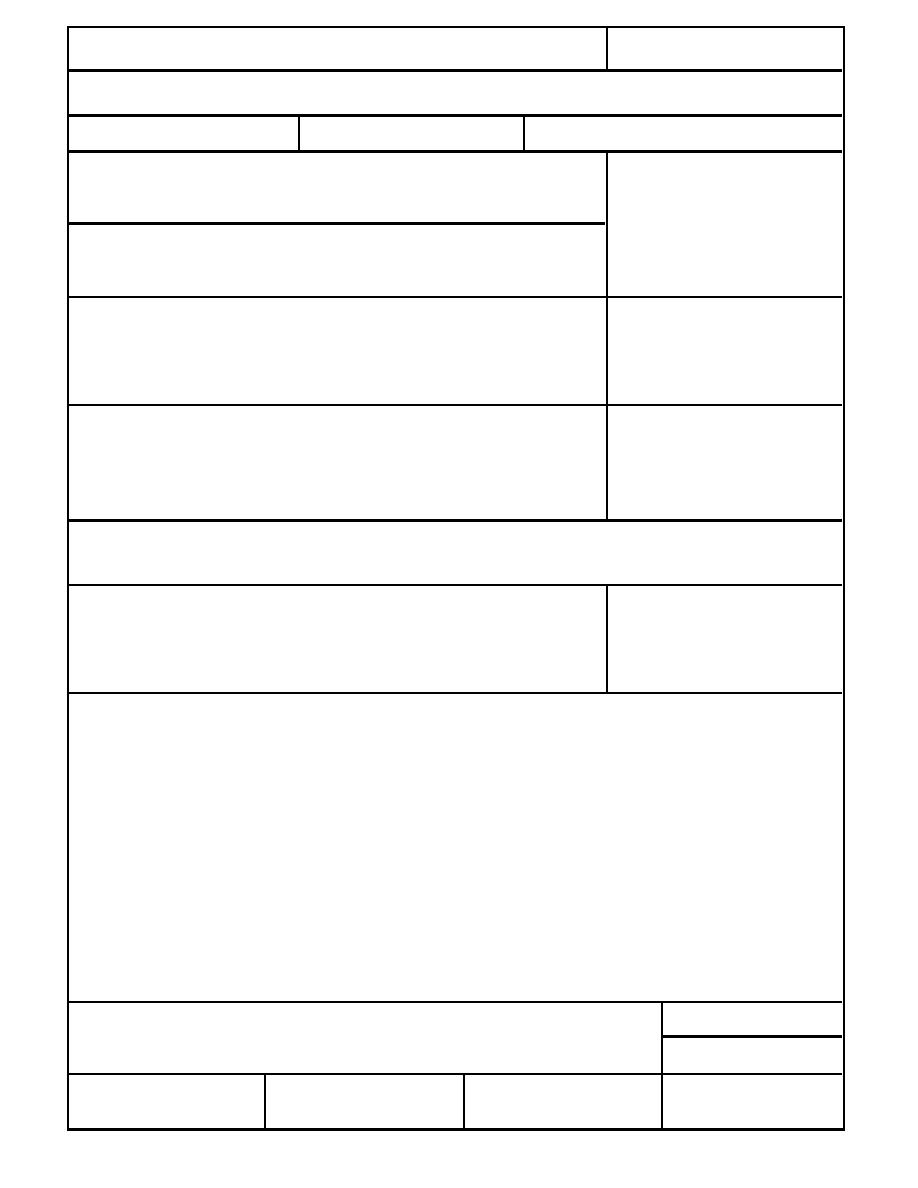
Form Approved
REPORT DOCUMENTATION PAGE
OMB No. 0704-0188
Public reporting burden for this collection of information is estimated to average 1 hour per response, including the time for reviewing instructions, searching existing data sources, gathering and
maintaining the data needed, and completing and reviewing the collection of information. Send comments regarding this burden estimate or any other aspect of this collection of information,
including suggestion for reducing this burden, to Washington Headquarters Services, Directorate for Information Operations and Reports, 1215 Jefferson Davis Highway, Suite 1204, Arlington,
VA 22202-4302, and to the Office of Management and Budget, Paperwork Reduction Project (0704-0188), Washington, DC 20503.
1. AGENCY USE ONLY (Leave blank)
2. REPORT DATE
3. REPORT TYPE AND DATES COVERED
August 1998
4. TITLE AND SUBTITLE
5. FUNDING NUMBERS
Site Characterization for Explosives Contamination at a Military
Firing Range Impact Area
6. AUTHORS
Thomas F. Jenkins, Marianne E. Walsh, Philip G. Thorne, Paul H. Miyares,
Thomas A. Ranney, Clarence L. Grant, and John R. Esparza
7. PERFORMING ORGANIZATION NAME(S) AND ADDRESS(ES)
8. PERFORMING ORGANIZATION
REPORT NUMBER
Special Report 98-9
U.S. Army Cold Regions Research and Engineering Laboratory
72 Lyme Road
Hanover, New Hampshire 03755
9. SPONSORING/MONITORING AGENCY NAME(S) AND ADDRESS(ES)
10. SPONSORING/MONITORING
AGENCY REPORT NUMBER
SFIM-A-EC-ET-CR-98025
U.S. Army Engineer District
U.S. Army Environmental Center
Sacramento, California
Aberdeen Proving Ground,
Maryland
11. SUPPLEMENTARY NOTES
For conversion of SI units to non-SI units of measurement, consult ASTM Standard E380-93, Standard Practice for Use of the International
System of Units, published by the American Society for Testing and Materials, 100 Barr Harbor Drive, West Conshohocken, PA 19428-
2959.
12a. DISTRIBUTION/AVAILABILITY STATEMENT
12b. DISTRIBUTION CODE
Approved for public release; distribution is unlimited.
Available from NTIS, Springfield, Virginia 22161
13. ABSTRACT (Maximum 200 words)
A study was conducted at the inland firing ranges at Fort Ord to determine the current levels of explosives resi-
dues and to recommend appropriate future site characterization techniques. A set of 280 soil samples was collected
from depths ranging from 015 cm to 105120 cm from anti-tank ranges 44 and 48. Sampling locations were se-
lected on the basis of the locations of current and former targets, and included an area away from specific targets
and a background area, not affected by local detonations. HMX was the explosives residue present at the highest
concentration. Much lower concentrations of RDX, TNT, and two isomers of aminodinitrotoluene were also de-
tected. Explosives residues were largely confined to surface soils near tank targets. A major problem for site char-
acterization was found to be the large spatial heterogeneity present. Composite samples very effectively provided
representative samples for 5- 5-m size grids. A colorimetric on-site method gave reliable results for HMX, relative
to SW846 Method 8330. No currently available on-site method for RDX was found to be adequate in the presence
of much higher concentrations of HMX.
14. SUBJECT TERMS
15. NUMBER OF PAGES
Anti-tank range
Firing range
Sampling
46
Compositing
HMX
Soil
16. PRICE CODE
Explosives
Impact area
Spatial heterogeneity
17. SECURITY CLASSIFICATION
18. SECURITY CLASSIFICATION
19. SECURITY CLASSIFICATION
20. LIMITATION OF ABSTRACT
OF REPORT
OF THIS PAGE
OF ABSTRACT
UNCLASSIFIED
UNCLASSIFIED
UNCLASSIFIED
UL
Standard Form 298 (Rev. 2-89)
NSN 7540-01-280-5500
Prescribed by ANSI Std. Z39-18
298-102



 Previous Page
Previous Page
